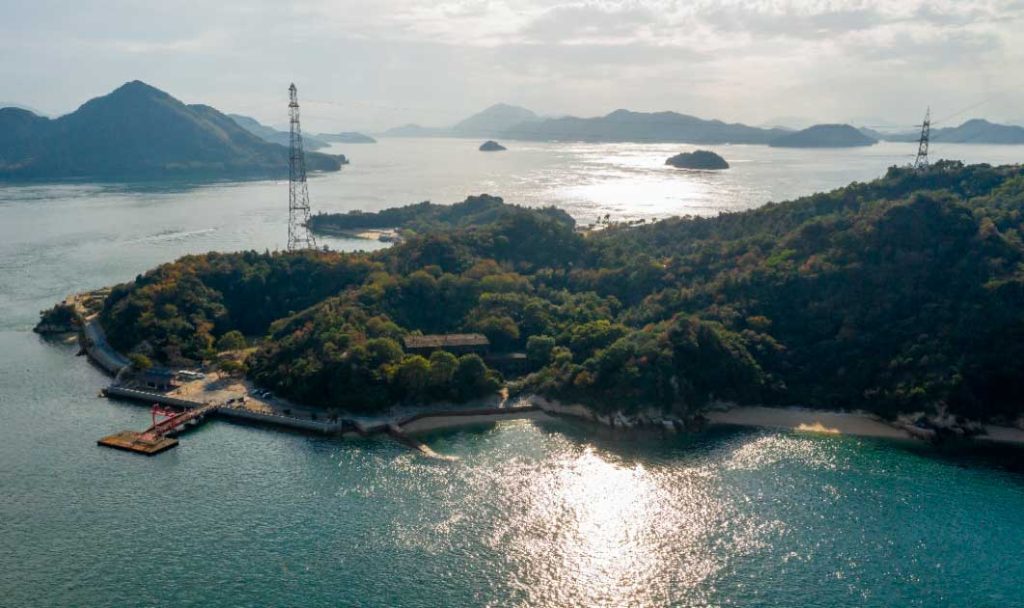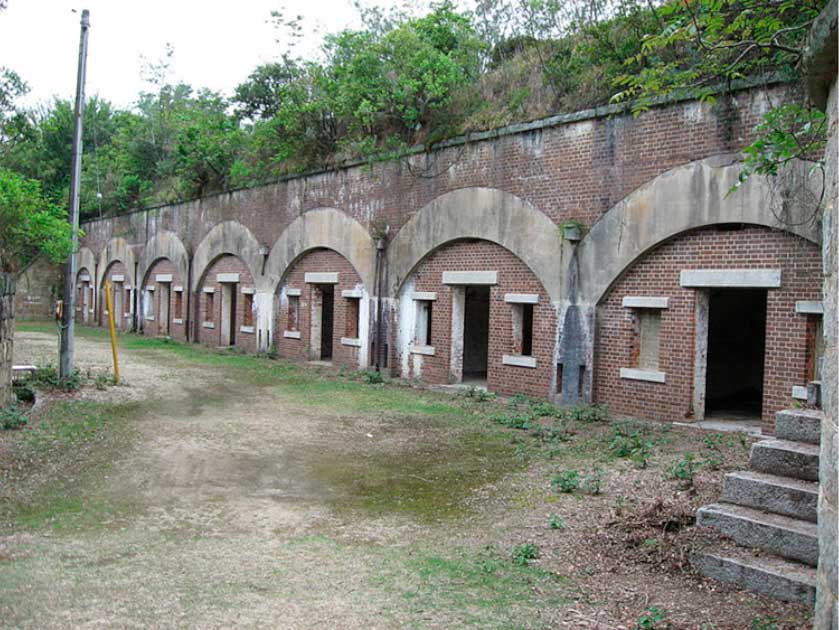Imagine a land where bunnies are free to hop around freely as they desire, where they live alone and safe. How would such an existence come to be a reality for a thousand feral bunny rabbits? Off the shores of mainland Japan lies Usagi Jima, also known as “Rabbit Island” and a herd of rabbits has claimed the island as their home. But where did the big eared, fluffy primitives come from?
In 2014 a video surfaced on the internet of a woman being stampeded by a colony of rabbits, which quickly became a viral sensation. The video was shot on Okunoshuma Island, two miles (3.2 km) off Takehara’s coast and 30 miles (48 km)east of Hiroshima, Japan in the Seto Inland Sea.
However the island’s history contains a far scarier truth than its present-day primary focus of providing accommodations for visitors, including hot springs, a golf course, and campgrounds. A “Poison Museum” was built by the Japanese in 1988, retelling the island’s terrible, secret history for the first time to an uninformed Japanese populace.
Poison Gas Island
The island itself is small, only twenty-five-mile (40 km) radius of the island, and can be traversed on foot in just over an hour and a half. Three fishing families lived here, alongside the ten forts that the Japanese military erected to protect the island during the Russo-Japanese war.
However, this peaceful place had caught the eye of the central powers, as a useful location for scientific research. The Imperial Japanese Army Institute of Science and Technology sought to repurpose the island in 1925 in order to advance their covert work on chemical warfare.
Oddly though, the Japanese made great efforts to safeguard their secret experimentation by redacting maps of the Seto Inland Sea and removing any trace of the island. The reason this was odd is that in the same year Japan was one of the signatories of the 1925 Geneva Protocol, which prohibited them from using chemical warfare, although not from developing or housing such chemical weapons.

So why did they go so far as to remove the island and keep the residents in the dark as to the goings-on inside the newly constructed factories? It certainly seemed like the government were up to no good on the island, and its isolation and distance from Tokyo made it a perfect site outside of the city, reducing any potential liability in the event of a disaster.
All and all it’s believed that six kilotons of mustard and tear gas were created in the ultra-secret plant, and the deadly weapons created with this poison are thought to have killed over 80,000 Chinese soldiers and residents. A very high number of victims, but it’s the other victims of the experimentation process who are still around that provide a reminder of the island’s dark past.
These victims aren’t humans but rabbits.
Rabbit Island: the Cruelty of Warfare?
Rabbits were the chosen animal for the chemical weapons testing on Usagi Jima. Even though it was a terrible practice at the time, it was not unheard of, and many businesses still use animals to test the safety of their products today.
What remained of the rabbits after the testing site was demolished in the 1940s was a topic of much conjecture. The rabbits that did not die from exposure, according to the Japanese authorities, were exterminated. Obviously the clean up teams did not do a thorough job.
Professor of Japanese politics Ellis Krauss at the University of California commented in a 2014 interview, “The test rabbits were all euthanized by the Americans when they came to the island during the Occupation… about 200 of the poor things were being [used] in experiments by the Japanese”
But how can they explain the near thousand rabbits who now roam the island? Some people thought the warren began when sympathetic biologists let a few of the European-bred rabbits into the wild. It should be emphasized that this theory is contested by many professionals.
Another popular theory asserts that in 1971 eighty rabbits were released by a group of visiting school children and that over the years these rabbits bred quickly. Living in an environment free from hunters and animal predators could have possibly led to their exponential growth over the years. Since they are renowned for their quick reproduction, many people think that this is conceivable.
Too Much of a Good Thing?
Sadly, the life of rabbits on the island is not as idyllic as it might seem. When the sun shines and visitors are present, the tourists feed the rabbits, and they gorge themselves on the food; nevertheless, when the weather is bad and visitors are scarce, the rabbits go without food. The problem is that natural herbivores demand a fiber-rich, balanced diet.
The rabbits struggle to maintain a balanced diet because their primary food source, the keen tourists, are seasonal visitors. Their alternative food source, the island’s foliage, is barren after years of rabbit grazing.
Unfortunately, a lot of people have the misconception that these cuddly animals consume cabbage. Tourists that feed these little mammals cabbage end up doing a lot of harm to the bunnies because the common vegetable causes severe bloating and is challenging for their delicate digestive systems to break down.
- Poveglia Island and Its Haunting History
- Medical Miracle or Total Fraud: Did Mary Toft Give Birth to Rabbits?
From the outside, it seems as though these rabbits have a simple, carefree life. But as professor of anthropology and sociology at Central New Mexico Community College Dr. Margo DeMello puts it, “As a population, I think they’re doing fine,”, “Individuals, I think, are doing not-so-fine”.
It was estimated that feral rabbits can expect to survive in their natural environment amongst natural predators for two years. Living without predators should have extended the lifespan of the bunnies living on rabbit island, but they too only have an average lifespan of two years.
An Uncertain Future
DeMello and a group of academics visited rabbit island in March 2015 as a result of the sensational viral video. They learned that the island’s tourism had changed; whereas it had previously been a well-traveled vacation destination for older Japanese visitors, it was now a popular destination for school field trips.

The annual admittance numbers, which skyrocketed from 136,000 in 2005 to 254,000 in 2015, amply demonstrated the shift in the kind of visitor. The poison museum and the 1,000 feral bunnies make up a full day of activities.
The fact that other organizations coexist on the island with the bunnies has become a problem over time. Although the Kyukamura Okunoshima Hotel claims to be hands-off with the rabbits, but they do acknowledge that they profit from the attraction that the rabbits offer.
Despite appearing to be “hands-off,” the hotel does in fact create a hazardous environment for the rabbits. Many are unfortunate victims of upper respiratory infections and gastrointestinal from the food fed by the hotel guests. Other rabbits are killed by the numerous passing cars.
After visiting rabbit island in 2012 Takashi Seki of the Japanese Ministry of Environment said, “We continue to wrestle aiming at coexistence of the wild animal with organizations”, and “Excessive artificial interventional is undesirable.”
What’s to say the Japanese government didn’t also lie about the abolition of all the rabbits after lying about the chemical weapons plant in 1925? We can see the rabbits are there today: where else could they have come from?
Top Image: Why are there so many rabbits on the island of Usagi Jima? Source: zamojojo / CC BY-SA 2.0.
By Roisin Everard